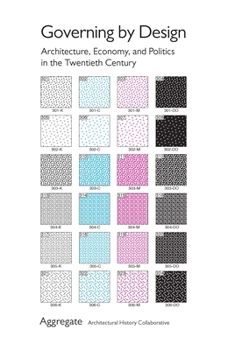Governing by Design: Architecture, Economy, and Politics in the Twentieth Century
(Part of the Culture, Politics, and the Built Environment Series)
Governing by Design offers a unique perspective on twentieth-century architectural history. It disputes the primacy placed on individuals in the design and planning process and instead looks to the larger influences of politics, culture, economics, and globalization to uncover the roots of how our built environment evolves. In these chapters, historians offer their analysis on design as a vehicle for power and as a mediator of social currents. Power is defined through a variety of forms: modernization, obsolescence, technology, capital, ergonomics, biopolitics, and others. The chapters explore the diffusion of power through the establishment of norms and networks that frame human conduct, action, identity, and design. They follow design as it functions through the body, in the home, and at the state and international level. Overall, Aggregate views the intersection of architecture with the human need for what Foucault termed \u201cgovernmentality\u201d--societal rules, structures, repetition, and protocols--as a way to provide security and tame risk. Here, the conjunction of power and the power of design reinforces governmentality and infuses a sense of social permanence despite the exceedingly fluid nature of societies and the disintegration of cultural memory in the modern era.
Format:Paperback
Language:English
ISBN:0822961784
ISBN13:9780822961789
Release Date:April 2012
Publisher:University of Pittsburgh Press
Length:300 Pages
Weight:0.85 lbs.
Dimensions:0.9" x 6.0" x 9.2"
Related Subjects
ArchitectureCustomer Reviews
0 rating





